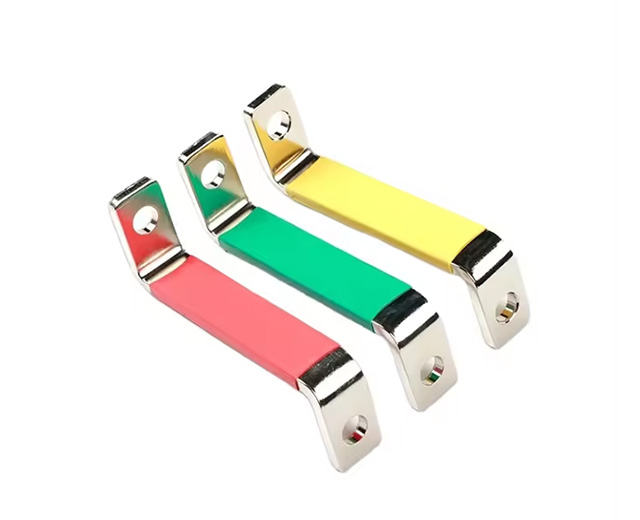2025-11-05 09:31:56
In modern electrical and power systems, busbars play a crucial yet often overlooked role. These simple yet vital components ensure efficient power distribution, reduce energy losses, and enhance the safety and reliability of electrical networks. But what is the function of a busbar, and why is it essential across industries ranging from solar energy to heavy machinery? This article will explain the definition, working principle, structure, types, and key benefits of busbars, along with their wide-ranging applications.

A busbar (or bus bar) is a metallic strip or bar made of highly conductive materials such as copper, aluminum, or brass, used to conduct and distribute electricity within a power distribution system. It acts as a central hub, connecting multiple circuits and ensuring current flows efficiently between electrical components.
Busbars are commonly found in switchgear, distribution boards, battery banks, solar panels, and industrial control systems. Depending on the system’s requirements, busbars can be solid, flexible, or insulated, making them adaptable to various environments and voltage levels.
The primary function of a busbar is to collect, carry, and distribute electrical current to multiple outgoing circuits from a single power source. Here’s how it works in practice:
Power Distribution:
Busbars serve as conductors that distribute electrical power to different loads or circuits within a system.
Current Balancing:
They maintain equal current distribution between phases, improving stability and preventing overload.
System Protection:
By centralizing connections, busbars help isolate faults and simplify maintenance procedures.
Voltage Regulation:
They minimize voltage drop across electrical circuits, ensuring consistent power output.
Connection Simplification:
Instead of complex wiring, a busbar system provides an organized and efficient method for interconnecting components such as transformers, generators, or battery packs.
A busbar system typically includes several components:
Conductive Core:
Made of copper or aluminum, providing excellent conductivity.
Insulation Layer:
Found in insulated busbars, protecting against short circuits and electrical shocks.
Support Insulators:
Mechanically hold and electrically isolate the busbars from enclosures.
Connectors and Terminals:
Used to attach cables, switches, or other electrical devices securely.
Depending on flexibility and structural needs, busbars can be solid, laminated, or braided.
Different systems require different types of busbars:
Copper Busbar:
Offers superior conductivity and corrosion resistance; ideal for heavy-duty and high-current applications.
Aluminum Busbar:
Lightweight and cost-effective, widely used in large-scale power systems.
Flexible Busbar / Flexible Copper Busbar:
Made from braided or laminated copper strips, these are used where vibration resistance and movement flexibility are needed.
Solid Busbar / Solid Copper Busbar:
Rigid design for fixed installations, ensuring maximum conductivity and durability.
Insulated Busbar:
Encased in insulation material, improving safety in compact installations.
Flexible Aluminum Busbar:
Combines lightweight aluminum with flexibility for modern electrical cabinets and EV systems.
Using a busbar system offers multiple advantages over traditional wiring:
High Efficiency: Reduced energy loss due to low resistance.
Compact Design: Saves space compared to multiple cable runs.
Ease of Installation: Simplifies power distribution layout and reduces wiring complexity.
Enhanced Safety: Especially with insulated busbars, reducing the risk of short circuits.
Scalability: Easy to expand for additional power distribution.
Better Heat Dissipation: Especially in copper busbars and solid busbar types.
Busbars are found across numerous industries and applications:
Power Distribution Panels: Centralized power management in industrial facilities.
Renewable Energy Systems: Used in solar panels and solar inverters for efficient current flow.
Electric Vehicles (EVs): Flexible copper busbars enable efficient energy transfer in battery systems.
Data Centers: Reliable and compact busbar systems ensure uninterrupted power distribution.
Switchgear and Control Systems: Organize electrical circuits safely and efficiently.
In a busbar system, electrical power enters through an incoming feed (such as from a generator or transformer). The busbar then distributes this power evenly to multiple outgoing circuits or loads.
For instance, in a power system, solid copper busbars handle high current flow between transformers and switchgear. In a solar system, flexible aluminum busbars or copper busbars link photovoltaic modules, ensuring minimal resistance and efficient energy transfer.
When selecting a busbar, engineers consider several factors:
Current Capacity: Determine the cross-sectional area needed for safe current handling.
Material Selection: Choose between copper busbar or aluminum busbar based on conductivity and cost.
Environmental Conditions: Use insulated busbars for humid or corrosive environments.
Flexibility Requirements: Use flexible busbar types for systems with vibration or thermal expansion.
The function of a busbar is to efficiently distribute power, enhance system reliability, and simplify connections within an electrical network. Whether it’s a flexible copper busbar in an EV battery pack, a solid copper busbar in industrial switchgear, or an aluminum busbar in solar systems, the right busbar design improves performance and safety across applications.